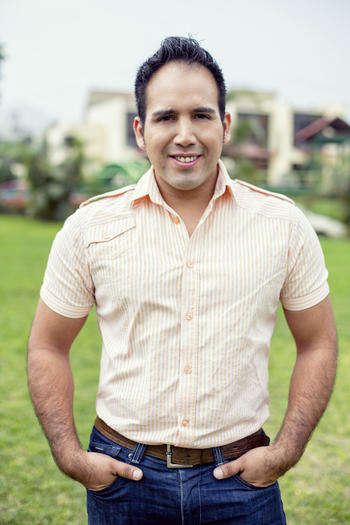Victor Emilio Alvarez Ponce

International Research Training Group "Between Spaces"
Movements, Actors and Representations of Globalisation
Associated PhD student
Project: “The Peruvian Earthquake of 1970: International Cooperation, Humanitarian Aid and Risk Mitigation. A history of the role of foreign policy against global warming and natural disasters (1962-1980)”
14195 Berlin
Specializes in environmental history and natural disasters. Ph.D. candidate in Latin American History at the Freie Universität Berlin. B.A. and M.A. in History from the Pontifical Catholic University of Peru (PUCP). He has taught History at PUCP and has worked as Assistant Management at the Faculty of Arts and Humanities PUCP. In 2014, winner of the French-Peruvian Award 'François Bourricaud' for research in the humanities and social sciences, given by the French Institute of Andean Studies (IFEA), the French Embassy and the National Council for Science, Technology and Innovation of Peru (CONCYTEC). He has presented lectures at international conferences of history in Spain, Argentina and Chile.
"The Earthquake of Yungay, Peru and Humanitarian Aid: A "Global Moment" During the Cold War (1970-1973)?"
Supervisor: Prof. Dr. Stefan Rinke (FU Berlin)
In 1970, there was a major earthquake in the Ancash region of Peru that caused the death of 70,000 people and triggered an avalanche that completely buried the city of Yungay. In the face of this emergency, the Peruvian Government deployed all of its capacity for immediate relief assistance to the affected areas; however, it was thanks to the significant humanitarian aid from abroad that it was possible to rapidly help over 150,000 disaster victims. Many countries around the world, together with international organizations, actively helped to address the crisis, despite the turbulent Cold War scenario. International cooperation focused on applying a collaborationist policy with the government of Peru, which had the goal of generating future grown in the affected region through loans and grants that allowed public investment, combined with innovative seismic and geological studies that would reduce the vulnerability of settlements, and increased trade links. Following this, the first national prevention regulations in the face of seismic events were enacted. Ultimately, a catastrophe of such dimensions created an economic and social imbalance that measured the pulse of the responsiveness of the Peruvian Government, a situation that could not have been controlled without international assistance. Consequently, this led to strong political relations being created with some of those countries which were providing aid, such as the Federal Republic of Germany, throughout the 1970s.
.
.
Critical Notice of ‘History of earthquakes in Peru. XV to XVII centuries' by Lizardo Seiner (2010). Summa Humanitatis, Interdisciplinary Electronic Journal of the Humanities Department PUCP, Vol. 5, No. 1. 2011.
«Tsunamis and political action of the Marquis of Castelfuerte. Prevention in Callao and alert in the kingdom of Chile (1724-1730)» in Juan Caceres M., Christian P. Leal and Leopoldo C. Tobar (editors), Reading and (Re) Readings in Colonial History II. (Santiago: Andros Printers, 2013), pp. 279-300.
Critical Notice of ‘Court of Viceroys: the environment of power in the seventeenth century Peru' by Eduardo Torres Arancivia (2014). Riva Agüero Institute Journal, No. 37, pp. 325-328. (2015).
«Rebuild or taxes? The earthquake of 1687 in Angaraes and an approach to a social conflict over extraction of mercury» Summa Humanitatis, Interdisciplinary Electronic Journal of the Humanities Department PUCP, Vol. 8, No. 1, pp. 131-166. (2015).
Pending publication in 2015:
«Vulnerability and prevention to tsunamies in South Sea. The urban relocation of Callao and Concepcion (1746-1763)» in Scarlett O'Phelan (editor), The Peru in the eighteenth century: the Age Bourbon. 2nd Ed. Lima: PUCP. Riva-Agüero Institute, 2015.
«The earthquake on May 31, 1970: risk mitigation and urban reconstruction plan for areas affected by the catastrophe (1970-1971)». 1st Spanish American Congress of Construction History. Conference Proceedings. Madrid: CHAHC, 2015.






